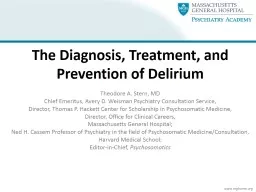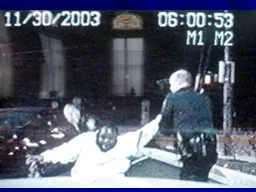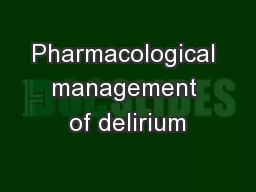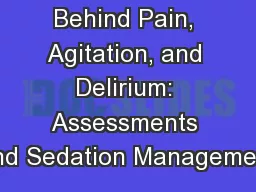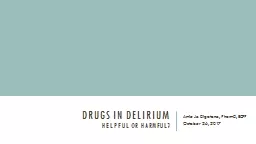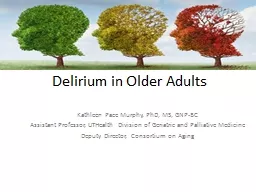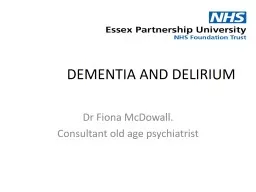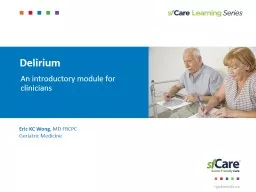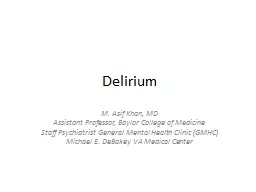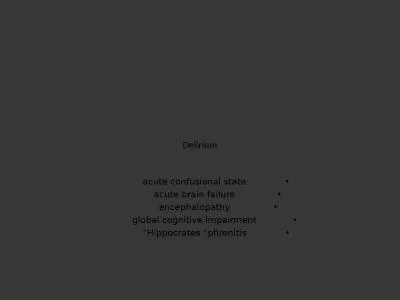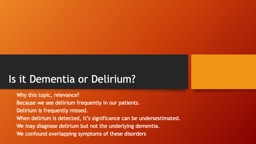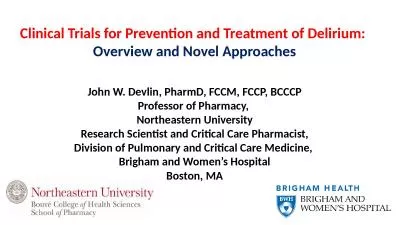PPT-The Diagnosis, Treatment, and Prevention of Delirium
Author : calandra-battersby | Published Date : 2020-04-03
Theodore A Stern MD Chief Emeritus Avery D Weisman Psychiatry Consultation Service Director Thomas P Hackett Center for Scholarship in Psychosomatic Medicine Director
Presentation Embed Code
Download Presentation
Download Presentation The PPT/PDF document " The Diagnosis, Treatment, and Preventio..." is the property of its rightful owner. Permission is granted to download and print the materials on this website for personal, non-commercial use only, and to display it on your personal computer provided you do not modify the materials and that you retain all copyright notices contained in the materials. By downloading content from our website, you accept the terms of this agreement.
The Diagnosis, Treatment, and Prevention of Delirium: Transcript
Download Rules Of Document
" The Diagnosis, Treatment, and Prevention of Delirium"The content belongs to its owner. You may download and print it for personal use, without modification, and keep all copyright notices. By downloading, you agree to these terms.
Related Documents

